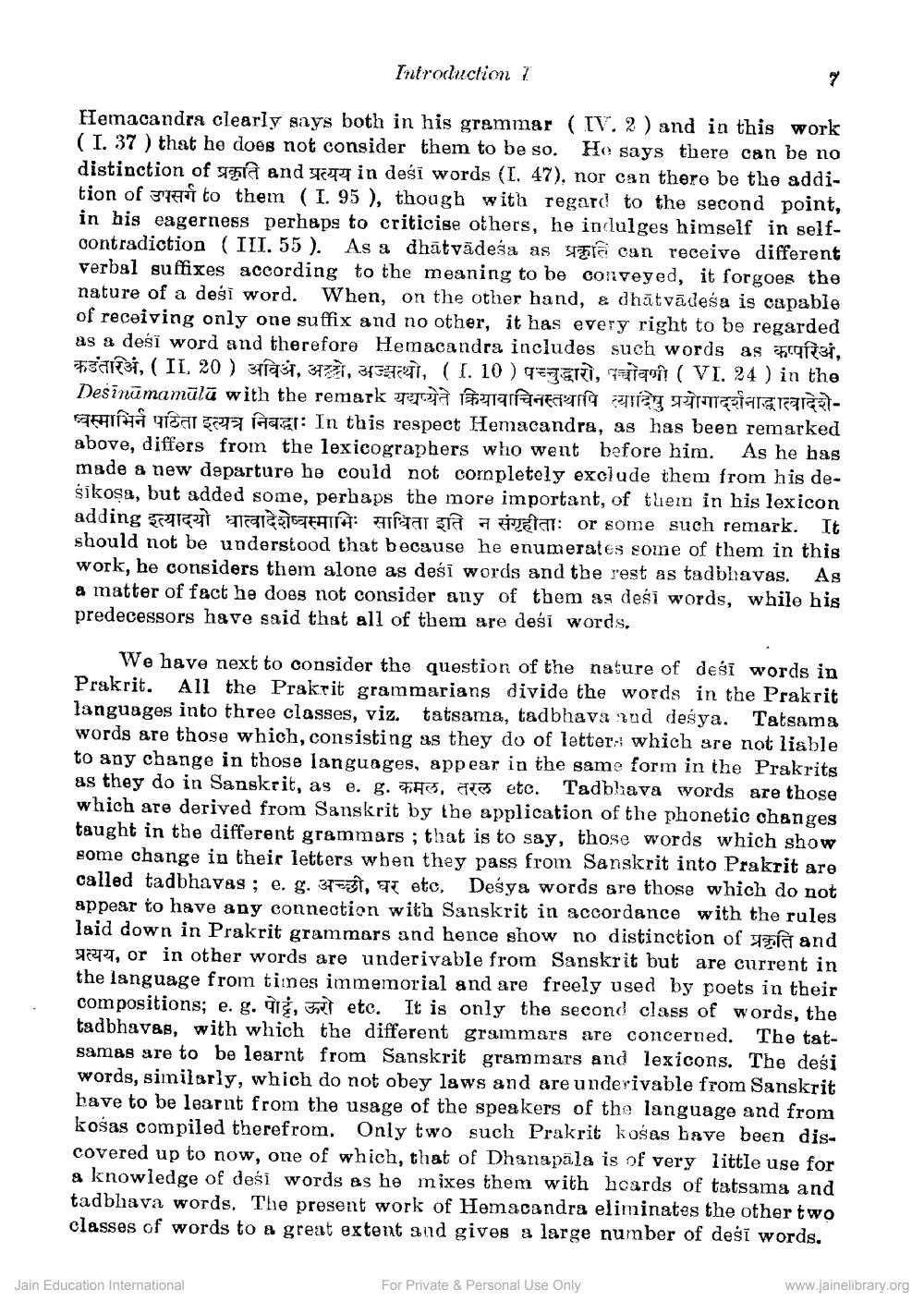________________
Introduction /
Hemacandra clearly says both in his grammar (IV. 2 ) and in this work (1. 37 ) that he does not consider them to be so. He says there can be no distinction of the end sky in desi words (I. 47), nor can there be the addition of a to them (I. 95 ), though with regard to the second point, in his eagerness perhaps to criticise others, he indulges himself in selfcontradiction (III. 55). As a dhātvädeśa as e can receive different verbal suffixes according to the meaning to be conveyed, it forgoes the nature of a desi word. When, on the other hand, & dhātvādesa is capable of receiving only one suffix and no other, it has every right to be regarded as a desi word and therefore Hemacandra includes such words as #91231, Farsi, ( II, 20 ) Blai, 312, 313 , (I. 10 ) ETER, 2019! ( VI. 24 ) in the Desinūmamālā with the remark Tea Tree T
T ALENTERI qan qidal 22 agt: In this respect Hemacandra, as has been remarked above, differs from the lexicographers who went before him. As he has made a new departure he could not completely exclude them from his desikosa, but added some, perhaps the more important, of them in his lexicon adding इत्यादयो धात्वादेशेष्वस्माभिः साधिता इति न संगृहीताः or some such remark. It should not be understood that because he enumerates some of them in this work, he considers them alone as deśī words and the rest as tadbhavas. As a matter of fact he does not consider any of them as desi words, while his predecessors have said that all of them are desi words.
We have next to consider the question of the nature of desi words in Prakrit. All the Prakrit grammarians divide the words in the Prakrit languages into three classes, viz. tatsama, tadbhava rad deśya. Tatsama words are those which, consisting as they do of letters which are not liable to any change in those languages, appear in the same form in the Prakrits as they do in Sanskrit, as e. g. 45, etc. Tadblava words are those which are derived from Sanskrit by the application of the phonetic changes taught in the different grammars ; that is to say, those words which show some change in their letters when they pass from Sanskrit into Prakrit are called tadbhavas; e. g. 3 1, at etc. Deśya words are those which do not appear to have any connection with Sanskrit in accordance with the rules laid down in Prakrit grammars and hence show no distinction of ac and
ty, or in other words are underivable from Sanskrit but are current in the language from times immemorial and are freely used by poets in their compositions; e. g. 4, etc. It is only the second class of words, the tadbhavag, with which the different grammars are concerned. The tatsamas are to be learnt from Sanskrit grammars and lexicons. The desi words, similarly, which do not obey laws and are underivable from Sanskrit have to be learnt from the usage of the speakers of the language and from košas compiled therefrom. Only two such Prakrit kośas have been discovered up to now, one of which, that of Dhanapala is of very little use for a knowledge of desi words as he mixes them with hcards of tatsama and tadbhava words. The present work of Hemacandra eliminates the other two classes of words to a great extent and gives a large number of desi words.
www.jainelibrary.org
For Private & Personal Use Only
Jain Education International




